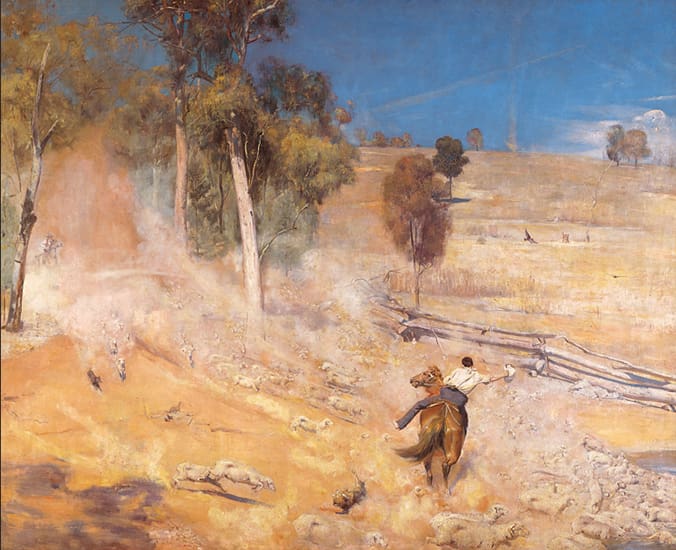As one of the earliest and most celebrated works of the era, Impression, Sunrise (1867) by Claude Monet is an undeniably seminal work of the Impressionist movement, lending its name and legacy. The rise of Impressionism in Paris stemmed from the dissatisfaction felt by a new generation of radical artists with classical traditions of art and the institutions which upheld them. In particular, the Paris Salon, which, as the official exhibition of the Académie des Beaux-Arts, was the academic authority on art and rejected any works deemed poor due to their transgression of traditional art imagery. This drove the development of the First Impressionist Exhibition in 1874. Displaying 165 works by 30 artists, the exhibition was organised by names that remain seared into the popular consciousness even today: Monet, Pissarro, Morisot, Degas and Renoir. With the intent to democratise the display of art and bring Impressionism to the fore, the exhibition had not yet won over critics, nor the public. In the face of this, Impressionists kept exhibiting over the coming years and soon the tides of popularity began to change.
Beyond the desire to break the status quo of the Paris Salon, Impressionists strived to capture modernity in its essence; coalescing politics, nature and urbanisation. The advent of photography, and its popularisation across the 19th century, fundamentally changed the ways in which the world was documented and observed. If a photograph can be taken to capture reality better than any realist painter or portraitist could, what then is the purpose of painting? As the Impressionists saw it: to capture the dimensionality of a single moment in fast-paced contemporary life, through the framework of light. The technique of painting ‘en plein air’, or outdoors, in conjunction with the invention of pre-mixed paint in a tube, allowed artists to easily travel and fleetingly capture an impressionistic moment of light and colour, often at dusk or dawn. No longer was painting about perfect pictorial accuracy, but rather it became about evoking the essence and feeling of the scene painted.
However, Impressionism was not exclusively Parisian. The very same impetus of cosmopolitan modern life and frustration with classical subject matter was present across the world, including in Australia. Though the 1880s saw the decline of Impressionism in Paris, they marked the movement’s beginning in Melbourne and Sydney, where it took on its own life and aestheticism. Depicting both sun-soaked cities and earthy bush-lands, Australian Impressionism (dubbed the Heidelberg School), used similar, though less erratic, brush strokes and techniques as the French to create works that reflected their modernity. In their strokes, you could see a new age emerging, eager to explore new ways of seeing and responding to the world through impressionistic transgressive art.
Despite their beauty, the aesthetics of Australian Impressionism champion the imagery of colonial settlement. Only 100 years since the country’s colonisation, the romanticisation of the Australian bushland was a central part of the ‘national identity’ and landscape painting became central to Australian Impressionists. Settler’s camp (1888) by Tom Roberts was described as “a poetical interpretation of a prosaic passage in the daily life of one of the pioneers of agricultural settlement” by James Smith, critic for the former newspaper The Argus. These ‘pioneering’ attitudes toward the subject matter of the bush prevailed in public and with critics, though many of the artists themselves focused on capturing the unique Australian ‘golden light’ as opposed to deliberately championing colonialism — yet, colonial undertones were unavoidable.
Western art culture in Australia was somewhat less experimental than what Europe had cultivated by this time, but in 1889 the Heidelberg School held The 9 by 5 Impression Exhibition to provide an “ocular demonstration” of Impressionism’s meaning to the Victorian public. Organisers and contributing artists included Arthur Streeton, Jane Sutherland, Tom Roberts and Charles Conder, who together, along with several other artists, exhibited the most controversial and now famous exhibition in Australian art history. At the time critics described the brushwork as ‘slap-dash’ and artworks as ‘formless and orderless’; in spite of this, the ever controversial visual language of Impressionism was not lost on all, described by others as possessing a poetic ‘clever vagueness’. A pivotal landmark for Australian landscape painting and Impressionism, the 9 to 5 Impression Exhibition collated the pictorial techniques of Australian artists as they captured the unique atmosphere of our dry, sun-filled country.





